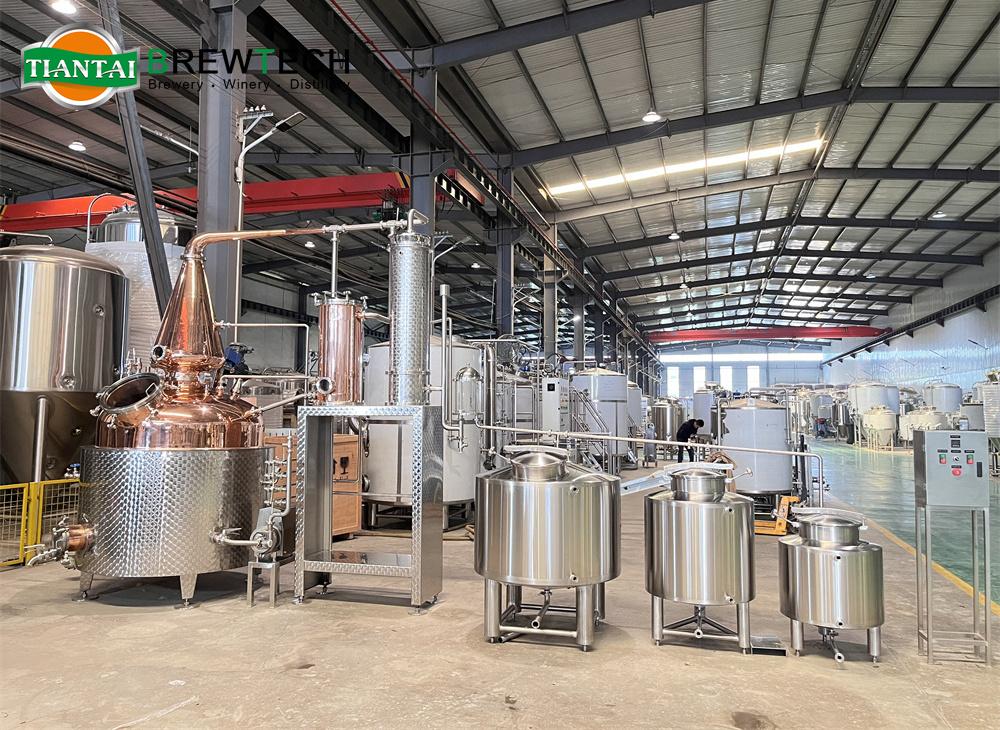The key components of gin distillation include:
Neutral Spirit: A high-proof alcohol, usually around 96% ABV, serves as the base.
Botanicals: Juniper berries are essential, but other common botanicals include coriander seeds, angelica root, citrus peels, and various herbs and spices.

Equipment Needed for Gin Distillation
Still: The heart of the distillation process. Stills come in various shapes and sizes, including pot stills and column stills. Pot stills are more traditional and often preferred for small-batch, artisanal gin production.
Boiler: This is where the neutral spirit is heated. The boiler must be equipped with temperature control to ensure precision.
Botanical Basket or Infusion Chamber: This is where the botanicals are placed so that the alcohol vapor can extract their flavors during distillation.
Condenser: This cools the alcohol vapor back into liquid form.
Collection Vessel: This is where the distilled gin is collected.
Hydrometer and Thermometer: These tools are essential for measuring alcohol content and temperature throughout the process.
Step-by-Step Guide to Distilling Gin
1. Preparing the Neutral Spirit
Start with a high-quality neutral spirit, typically grain-based, with an ABV of around 96%. Dilute it with water to bring it down to around 50% ABV. This ensures that the spirit is not too strong to start with and helps in the even extraction of botanical flavors.
2. Selecting and Preparing Botanicals
Juniper berries are mandatory for gin, but you can experiment with other botanicals to create a unique flavor profile. Common botanicals include:
Coriander seeds
Angelica root
Citrus peels (lemon, orange)
Cardamom
Orris root
Various herbs and spices
Measure and prepare your botanicals according to your recipe. Crushing or grinding some botanicals can help in better flavor extraction.
3. Loading the Still
Pot Still: Pour the diluted neutral spirit into the boiler.
Botanical Basket: Place the botanicals in the basket or infusion chamber. In some setups, botanicals can be added directly to the boiler, but using a basket ensures cleaner distillation.
4. Heating the Still
Slowly heat the still. The temperature needs to be carefully controlled to allow the alcohol to vaporize while preventing the botanicals from burning. The boiling point of ethanol is 78.37°C (173.07°F).
5. Collecting the Distillate
As the alcohol vapor rises through the still, it passes through the botanical basket, extracting the flavors. The vapor then moves into the condenser, where it cools and turns back into liquid form. This liquid is collected in the collection vessel.
6. Monitoring the Distillation
Use a hydrometer and thermometer to monitor the alcohol content and temperature of the distillate. The first portion collected, known as the "heads," contains undesirable compounds and should be discarded. The main portion, known as the "hearts," is the high-quality gin. The final portion, the "tails," can also contain off-flavors and is often discarded or redistilled.
7. Diluting and Bottling
Once you have collected the hearts, you may need to dilute the gin to the desired bottling strength, typically around 40-45% ABV. Use purified water to achieve this. Finally, filter the gin if necessary and bottle it.
Tiantai company provide distillery equipment for gin, whisky, vodka, and more. If you are interested in receiving the detailed specification and pricing information, please let us know.
[email protected]
Emily Gong


.jpg)


.jpeg)

Get In Touch